This was published 4 years ago
How Australian passports are made and checked: The secrets behind our passports
By Sue Williams
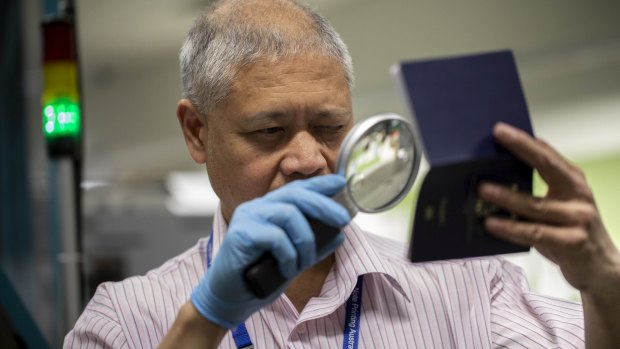
An Australian passport undergoes a quality check at Note Printing Australia Limited.Credit: Arsineh Houspian
It's 8am and there's already a lengthy queue of hollow-eyed, ashen-faced people waiting anxiously outside the door of the building that houses the Sydney branch of the Australian Passport Office.
At the front of the line is John, complete with his packed suitcase, who tore his home apart earlier this morning looking – in vain – for his passport ready for his flight to Bali later today.
Behind him is Lawrence, who's meant to be leaving tomorrow to be reunited with his girlfriend in Budapest but whose passport was irreparably damaged while sitting in a pocket during a rushed, last-minute clothes wash.
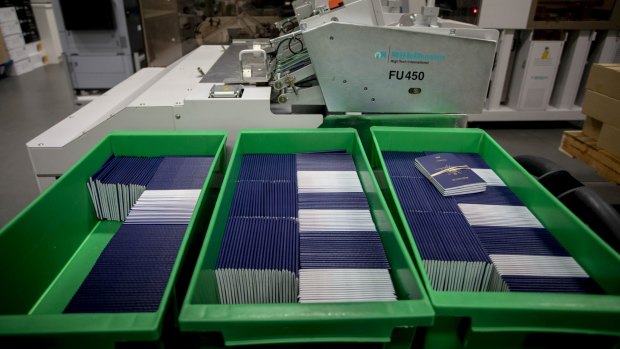
More than 14 million people hold an Australian passport, more than 57 per cent of our nation's population.Credit: Arsineh Houspian
And next up is Helen, weeping softly over her bags, who was turned away from her flight to Malaysia to meet up with her prospective in-laws after her passport was discovered to have less than six months' validity.
They're all here in the desperate hope that new passports can be quickly issued to salvage both their travel plans – perhaps even their relationships – and the sudden realisation that, of everything they own, their passports are the most critical possession of all.
It's something that the Australian Government officials, in charge of issuing 2 million passports a year in a country where more than 14 million people, or more than 57 per cent of the population, hold an Australian passport, have known all along.
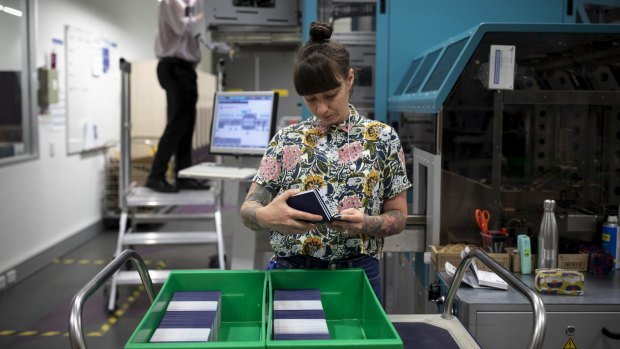
"People take their passports for granted, but they have no idea how much work goes into them behind the scenes," says Walter Valeri, director of the passport personalisation centres in Craigieburn and Epping.Credit: Arsineh Houspian
"It really is the most precious document you'll ever own," says Bridget Brill, executive director of the Australian Passport Office, at her office in Canberra. "But the fact that we have so many lost or stolen passports, 40,000 in 2018-2019 alone, shows that people are not as careful with them as they should be.
"Then we have all the damaged passports, too. The age group from 18 to 29 are the ones most likely to have passport damage. We've had people going swimming with them, using them as drink coasters, letting them be chewed by the dog, and we had one young man who used his as a travel journal, writing all about his holiday on the pages and pasting on his photos.
"He had problems getting out of the country he was travelling in and back into Australia on his passport, much to his surprise. He argued that he'd paid for his passport so it was his to do with it what he wanted. But it's a legal document. We ended up issuing him another document and he got home and paid for a new passport.
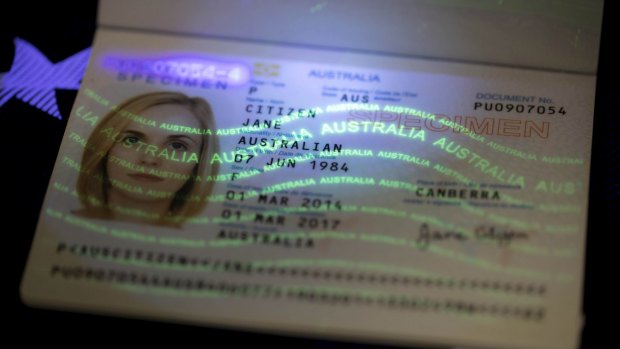
Australian passports are these days so sophisticated, it's believed to be pretty much impossible to forge them.Credit: Arsineh Houspian
"I think, for many, the importance of a passport hasn't quite resonated."
PASSPORTS: A SHORT HISTORY
The origin of the modern-day passport goes back to the days of the Magna Carta in 1215 when King John of England signed the documentation that allowed subjects to travel unhindered.
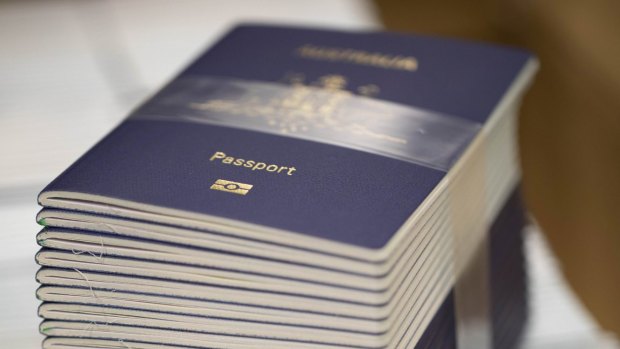
Our current passport series, the "P" series, introduced in 2014, is named after the first letter of the serial number issued.Credit: Arsineh Houspian
Australia has been issuing passports since World War I to regulate the departure from Australia of military-aged men. After the war, concerns about foreigners, and the potential for infection by pandemics, led to passports being made permanent, through the Passport Act 1920.
In 2005, Australia became one of the first countries to issue its passports with an embedded chip containing biometric information and a digitised photograph that can be read electronically, which speeds up clearance of customs by travellers and minimises identity crimes.
Our current passport series, the "P" series, introduced in 2014, is named after the first letter of the serial number issued. When "P" is exhausted another letter in the alphabet will precede the serial number.
DRAWING A BLANK
They sit in a womb behind a 30-centimetre-thick steel and concrete door, anonymous, with features not yet formed or identities born into the world. These are the nation's stock of blank passports, freshly printed on the same presses as the nation's banknotes in a high-security complex, protected 24-7 by armed guards, a sophisticated fortification system with airlocks, comprehensive CCTV, X-rays and an elaborate visitor vetting procedure, in the outer Melbourne suburb of Craigieburn.
They're stored in this locked and guarded vault at Note Printing Australia, a company owned by the Reserve Bank of Australia, ready to be transferred to the plant on the other side of the corridor ready for their birth, and "personalisation". Here, they're delivered from their palettes, freed from their boxes, given a unique number and the identity of their new owner. Then they're chipped, coded, laminated at exactly 83.33degrees and imprinted with well over 50 individual security features – including the image of a floating kangaroo, a striped barber's pole and lots of stars, many of which can only be seen under an ultra-violet light – via a series of cutting-edge machines, designed in Australia and made in Germany.
Finally, the passports are photographed, with the images sent electronically to Customs and Excise, checked and channelled into another series of state-of-the-art machines, which put them into envelopes along with Department of Foreign Affairs' Smart Traveller booklets and wallets for safe-keeping.
Lastly, they're posted out to their owners who've already, mostly unknowingly, been subjected to more than 180 different identity checks, some automated and others conducted by trained, professional facial recognition experts, to make sure they're exactly who they say they are. One test is against 30 million other passport photographs that sit in the database, Australia's largest single repository of biometric-quality facial images.
The process is a huge operation, with one passport produced every three seconds, or 8470 every working day, with the number of passports issued in a year, if placed end to end, stretching the 370 kilometres from Melbourne to Wagga Wagga in NSW.
Australia, being small but agile, is at the forefront of new international passport technology. We, for instance, led the world post the 9/11 terrorist attacks in the introduction of ePassports with information digitalised and cryptographed on computer microchips, practically impossible to counterfeit, in 2005.
"People take their passports for granted, but they have no idea how much work goes into them behind the scenes," says Walter Valeri, director of the passport personalisation centres in Craigieburn (and also in nearby Epping), as he gazes lovingly over the machines at the first, and largest, facility.
"You can't ever leave the country and travel overseas without them, and we're always updating the security features. There's still today a lot of countries that don't have ePassports as they can't afford the technology, but even I don't know exactly how many security features there are in ours. For security reasons, there would only be two or three people within the Department of Foreign Affairs and Trade [DFAT] who'd know."
A PASSPORT, MY KINGDOM FOR A PASSPORT
February, March and April are the busiest months for the passport office, the time when many of us are planning holidays for the coming year, and the next. It's then that many of us discover our passports have expired, or don't have much time left, are lost, have vanished, or are too badly damaged to be acceptable. Others of us apply for passports for the first time. In 2018-19, for example, there were 40 per cent more passports issued than a decade ago.
"The amount of travel we are doing is growing exponentially and at a huge rate," says Brill. "We had a bumper year in 2018, an even bigger year in 2019 and probably 2020 will be bigger still. Travel is increasingly business-related.
"But we're also seeing a huge increase in the number of over-65s and baby boomers loving to travel, and the under-fives as well, which is related to the growth of the cruise industry where people can travel comfortably with young children and have facilities like creches and babysitters. So there's growth at either end of the age spectrum. We have over 200 passports now being used by active people over 100."
Australia's oldest passport holder is currently a 110-year-old woman, while there's been at least two known cases of travel documents being issued to infants, both boys, on the same day they were born.
In past years, children used to travel on their parents' passports, but these days they have their own. That can be a complex situation demanding the passport office carry out a series of checks to make sure both parents consent to the child being given a passport. There can be enormous difficulties when families break up and the father or mother wants to take the infant overseas.
The demand for passports can dip occasionally, such as after the 9/11 attacks in 2001 or during the global outbreak of severe acute respiratory syndrome (SARS) in 2003. It can also rise suddenly, and quite unexpectedly.
"We've found we get a big surge in demand whenever Jetstar announces a special flights deal," says Valeri, who's worked for the Australian Passport Office for 30 years. "Then we have a lot of new people applying for passports."
A number of passports each year are also cancelled either on national security or law enforcement grounds. In 2018-2019, 255 were cancelled, including that of a Singaporean national who was convicted of defrauding the social security system and was found to be illegally holding an Australian passport. At the same time, some applications are routinely refused, particularly when the applicants are suspected of dishonesty or fraud. In 2018-2019, 120 applications weren't processed.
Australia also became the first country to deny convicted paedophiles passports with legislation passed in December 2017. In its first year of operation, it stopped more than 800 paedophiles travelling abroad who might have otherwise participated in child sex tourism.
PIXEL PERFECT
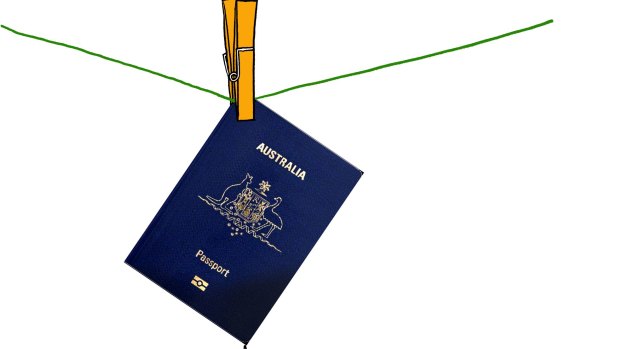
Credit: Illustration: Simon Letch
Australian passports are these days so sophisticated, it's believed to be pretty much impossible to forge them to the point where they'd be accepted by either our border officials, or those of other countries.
"We have the image from films and television of gangs working in a little backroom of an alley in another country making false passports," says Brill. "But while the threat of forgeries is very real, for us the numbers are small.
"We came across about 200 forged passports in 2018-2019, but other countries have larger numbers. The passports we've found though, were mostly used as identity documents in order to secure things like loans. Very few are ever used to travel on."
Blank passports can be worth anything from $30,000 to $300,000 on the black market, but printing them to appear authentic is now enormously problematic. Changing even a single pixel, for instance, in the facial image stored on the passport chip would trigger an alert for customs officials or at SmartGate terminals.
The five pairs of stylised red and blue kangaroos that appear to float or sink below the surface of pages in the "P" series of the passport, according to the viewing angle – and appear in different colours in different lighting – would be incredibly difficult to replicate.
Then there's the intaglio printing – in which the design is etched into the printing surface, with the ink coming up from below – that feels different to normal print, the textured laminate, the special watermarks, the micro-printing not visible to the naked eye, and the extra security links that can only be seen under UV and infra-red light.
The next series of passports, the "R" series, that is slated to come out mid-2021, will be even harder to copy as the main identity page will be forged in a new hard polycarbonate material that will be waterproof, much more sturdy and include even more security features.
In addition, many of the staff now undergo special facial recognition training. Children with passports grow up and change, adults have cosmetic surgery, men lose hair, both men and women wear wigs, and make-up can create baffling transformations. There are always instances, too, of people altering their photos in the hope of making themselves look younger.
At the passport office, itself, only occasionally are mistakes made. One Sydney woman was not allowed on to her flight to Bali last year when a typo named her as Weddy rather than Wendy. And one passport went missing at the Melbourne depot but was eventually found in the wrong pile after a thorough search of the premises and looking through the CCTV tapes.
THE MOST IMPORTANT DOCUMENT OF ALL
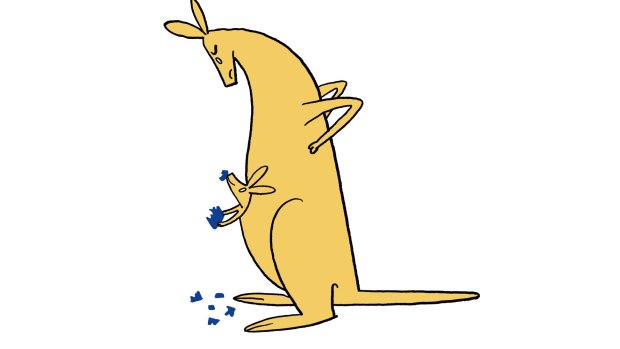
Credit: Illustration: Simon Letch
We're all human and travel plans can often go awry with passport problems. John, Lawrence and Helen all rushed into the Sydney Passport Office when the door eventually opened at 8.30 am.
"They were brilliant," says Lawrence, 25, who emerged with his passport and his holiday plans with his girlfriend intact. "I had to pay about $400 to get it quickly but, to be honest, they could have charged me $800 and I'd still have paid it."
Helen fist-pumped the air as she jumped into a taxi, while John eventually made it to Bali. And it was a similar happy ending for an 80-year-old woman who ended up with a new travelling companion when she took the wrong passport to embark on a cruise and was turned back, at the same time as a middle-aged man who had less than six months on his passport. The pair stayed as their companions departed – and then, when their new passports arrived, flew to the ship's next port together.
Passport staff went into overdrive too when a woman, celebrating her 65th anniversary with her husband with a 53-night cruise, was also turned away for having too little time on her passport. She explained that her husband was terminally ill and had a dying wish to pass away at sea. The passport was quickly issued.
Generally, it's a three-week turnaround for a passport at $298 for a new 10-year one or $187 for a replacement but, for an extra $218 fee, it can be issued within two business days, or if especially urgent, sometimes even less.
"You do hear some sad stories why people are travelling, and we do have provisions built into the legislation for issuing passports on compassionate grounds," says Brill. "We'll always do our utmost to help in those circumstances.
"It's for that reason we're a seven-day-a-week operation to issue emergency travel documents for families affected by the New Zealand volcano, for instance, for someone whose parent is dying or in child abduction cases.
"Passports are the window to the world for Australians, and probably the most important document they'll ever have."
PASSPORT OWNERSHIP: HOW WE COMPARE
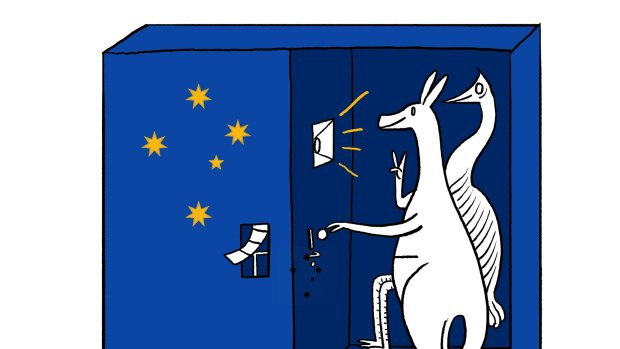
Credit: Illustration: Simon Letch
Australia 57.4 per cent
Canada 60 per cent
New Zealand 70 per cent
United Kingdom 75 per cent
United States 42 per cent
Source: Australian Passport Office
AUSTRALIANS AND THEIR PASSPORTS
Two-thirds of all Australians have used the Government's passport services.
More than 14 million people hold an Australian passport, more than 57 per cent of our nation's population.
The Australian Passport Office, the largest division in DFAT, touches the lives of around 45,000 Australians a week, the third-biggest reach of any Commonwealth agency after the Department of Human Services and the Australian Taxation Office.
in 2018-2019, the Australian Passport Information Service, which is run by the Department of Human Services' Hobart-based call centre, received more than 1 million phone and 7600 email enquiries.
The passport office's eight passport offices, together with 1600 Australia Post outlets around the country, handle about 6000 over-the-counter passport-related interactions each week. Tuesday is the busiest day.
Source: Australian Passport Office
PASSPORT ADVICE FOR AUSTRALIANS
Check your passport is valid, has more than six months before its expiry date and is not damaged before you travel.
If you need to apply for a passport, do so well in advance of your planned travel date.
Treat your passport as a valuable document and always keep it in a safe place, away from liquids, out of the wash and never use sticky tape on the pages.
Make sure you have enough blank pages in your passport for the countries you're travelling to. If it's nearly full, you'll need to apply for a new passport, regardless of how long it has validity.
If your passport is lost or has been stolen, that should be reported to the passport office immediately so it can be cancelled to prevent anyone else trying to use it for either travel, or identity verification.
Source: Australian Passport Office
THE COUNTRIES WHERE MOST AUSTRALIAN PASSPORTS ARE STOLEN
1.Australia
2.Italy
3. United States
4.Spain
5.Greece
THE TOP COUNTRIES IN WHICH AUSTRALIANS LOSE PASSPORTS
1.Australia
2.United States
3.UK
4.China
5.Italy
TEN MOST POWERFUL PASSPORTS
These are currently the best 10 passports to own in the world, according to the Henley Passport Index, in terms of the number of destinations their holders can access without requiring a visa before leaving home.
1.Japan, Singapore
2.Finland, Germany, South Korea
3.Denmark, Italy, Luxembourg
4.France, Spain, Sweden
5.Austria, Netherlands, Portugal, Switzerland
6.Belgium, Canada, Greece, Ireland, Norway, United Kingdom, United States
7.Malta
8.Czech Republic
9.Australia, Iceland, Lithuania, New Zealand
10.Latvia, Slovakia, Slovenia
See also: 'I actually cried': The minor passport issue that can ruin your holiday
Sign up for the Traveller newsletter
The latest travel news, tips and inspiration delivered to your inbox. Sign up now.